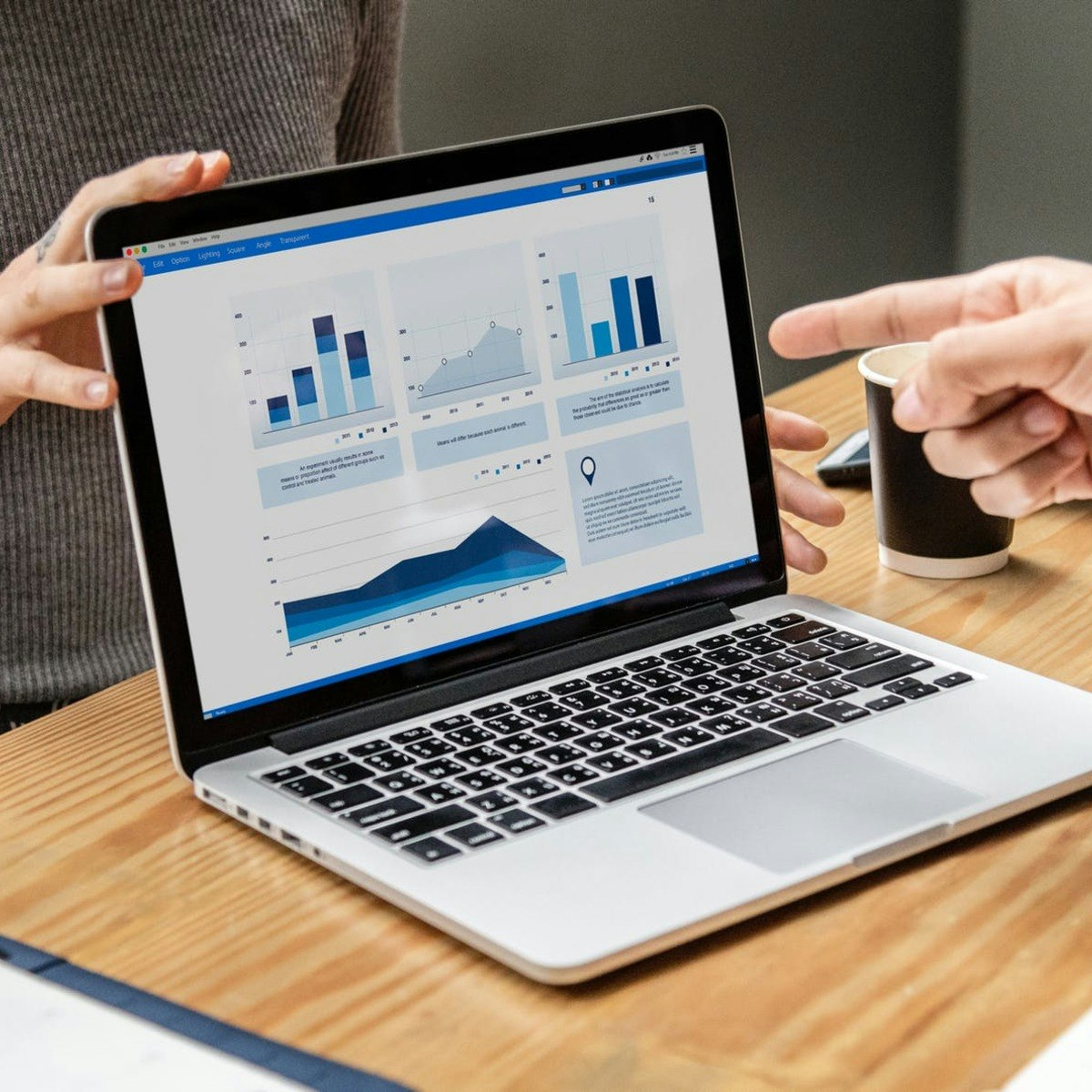
This is the first course in the four-course specialization Python Data Products for Predictive Analytics, introducing the basics of reading and manipulating datasets in Python. In this course, you will learn what a data product is and go through several Python libraries to perform data retrieval, processing, and visualization.
Read more
This is the first course in the four-course specialization Python Data Products for Predictive Analytics, introducing the basics of reading and manipulating datasets in Python. In this course, you will learn what a data product is and go through several Python libraries to perform data retrieval, processing, and visualization.
This is the first course in the four-course specialization Python Data Products for Predictive Analytics, introducing the basics of reading and manipulating datasets in Python. In this course, you will learn what a data product is and go through several Python libraries to perform data retrieval, processing, and visualization.
This course will introduce you to the field of data science and prepare you for the next three courses in the Specialization: Design Thinking and Predictive Analytics for Data Products, Meaningful Predictive Modeling, and Deploying Machine Learning Models. At each step in the specialization, you will gain hands-on experience in data manipulation and building your skills, eventually culminating in a capstone project encompassing all the concepts taught in the specialization.
What's inside
Syllabus
Week 1: Introduction to Data Products
This week, we will go over the syllabus and set you up with the course materials and software. We will introduce you to data products and refresh your memory on Python and Jupyter notebooks.
Read more
Syllabus
Good to know
Save this course
Reviews summary
Well-received data processing course
Activities
Review basic Python programming concepts
Show steps
Strengthen understanding of Python fundamentals essential for data manipulation.
Browse courses on
Python
Show steps
-
Revisit variables, data types, and operators
-
Recall looping and conditional statements
-
Practice writing simple functions and classes
Create a course notebook with notes and resources
Show steps
Organize and reinforce learning by compiling materials in a central location.
Show steps
-
Set up a notebook or document to store notes, code snippets, and resources
-
Regularly add and update notes from lectures and readings
-
Include helpful links to external resources and tutorials
-
Review and summarize key concepts and formulas
Read 'Python Data Science Handbook' by Jake VanderPlas
Show steps
Gain a comprehensive understanding of Python's capabilities for data science and analytics.
View
Python Data Science Handbook: Essential Tools...
on Amazon
Show steps
-
Review the fundamentals of Python programming
-
Explore data analysis techniques using Python libraries
-
Practice data visualization and data manipulation
-
Complete exercises and assignments to reinforce concepts
Five other activities
Expand to see all activities and additional details
Show all eight activities
Join a study group for data analysis
Show steps
Engage with peers to discuss concepts, exchange insights, and enhance understanding.
Browse courses on
Data Analytics
Show steps
-
Identify or form a study group with fellow students
-
Set regular meeting times and establish a study schedule
-
Prepare for meetings by reviewing materials and preparing questions
-
Take turns presenting concepts and facilitate discussions
Follow tutorials on using NumPy and Pandas
Show steps
Enhance proficiency in using these essential Python libraries for data manipulation and analysis.
Browse courses on
NumPy
Show steps
-
Identify helpful tutorials and online resources
-
Follow step-by-step instructions to perform data operations
-
Experiment with different functions and methods
-
Apply the acquired knowledge to real-world datasets
Practice loading and cleaning datasets
Show steps
Reinforce techniques for loading and cleaning datasets before analysis.
Browse courses on
Data Retrieval
Show steps
-
Load data from multiple sources, including CSV and JSON files
-
Identify and remove duplicate data points
-
Convert data types and handle missing values
Create a visual data dictionary
Show steps
Enhance understanding of dataset structure and variables by representing them visually.
Browse courses on
Data Visualization
Show steps
-
Map variables to visual elements (e.g., colors, shapes, sizes)
-
Create a legend or key explaining the visual representation
-
Use color coding or patterns to distinguish between categories and values
-
Generate a visual summary of the data distribution and relationships
Develop a data manipulation pipeline
Show steps
Build a comprehensive process for handling and transforming data in a structured and repeatable manner.
Browse courses on
Data Pipelines
Show steps
-
Define the data flow and identify the required transformations
-
Implement data cleaning, transformation, and aggregation steps
-
Set up automated testing to ensure pipeline reliability
-
Document the pipeline for easy maintenance and collaboration
Review basic Python programming concepts
Show steps
Strengthen understanding of Python fundamentals essential for data manipulation.
Browse courses on
Python
Show steps
- Revisit variables, data types, and operators
- Recall looping and conditional statements
- Practice writing simple functions and classes
Create a course notebook with notes and resources
Show steps
Organize and reinforce learning by compiling materials in a central location.
Show steps
- Set up a notebook or document to store notes, code snippets, and resources
- Regularly add and update notes from lectures and readings
- Include helpful links to external resources and tutorials
- Review and summarize key concepts and formulas
Read 'Python Data Science Handbook' by Jake VanderPlas
Show steps
Gain a comprehensive understanding of Python's capabilities for data science and analytics.
View
Python Data Science Handbook: Essential Tools...
on Amazon
Show steps
- Review the fundamentals of Python programming
- Explore data analysis techniques using Python libraries
- Practice data visualization and data manipulation
- Complete exercises and assignments to reinforce concepts
Join a study group for data analysis
Show steps
Engage with peers to discuss concepts, exchange insights, and enhance understanding.
Browse courses on
Data Analytics
Show steps
- Identify or form a study group with fellow students
- Set regular meeting times and establish a study schedule
- Prepare for meetings by reviewing materials and preparing questions
- Take turns presenting concepts and facilitate discussions
Follow tutorials on using NumPy and Pandas
Show steps
Enhance proficiency in using these essential Python libraries for data manipulation and analysis.
Browse courses on
NumPy
Show steps
- Identify helpful tutorials and online resources
- Follow step-by-step instructions to perform data operations
- Experiment with different functions and methods
- Apply the acquired knowledge to real-world datasets
Practice loading and cleaning datasets
Show steps
Reinforce techniques for loading and cleaning datasets before analysis.
Browse courses on
Data Retrieval
Show steps
- Load data from multiple sources, including CSV and JSON files
- Identify and remove duplicate data points
- Convert data types and handle missing values
Create a visual data dictionary
Show steps
Enhance understanding of dataset structure and variables by representing them visually.
Browse courses on
Data Visualization
Show steps
- Map variables to visual elements (e.g., colors, shapes, sizes)
- Create a legend or key explaining the visual representation
- Use color coding or patterns to distinguish between categories and values
- Generate a visual summary of the data distribution and relationships
Develop a data manipulation pipeline
Show steps
Build a comprehensive process for handling and transforming data in a structured and repeatable manner.
Browse courses on
Data Pipelines
Show steps
- Define the data flow and identify the required transformations
- Implement data cleaning, transformation, and aggregation steps
- Set up automated testing to ensure pipeline reliability
- Document the pipeline for easy maintenance and collaboration
Career center
Data Analyst
Data Scientist
Data Engineer
Statistician
Business Analyst
Software Engineer
Database Administrator
Data Visualization Specialist
Information Security Analyst
Financial Analyst
Operations Research Analyst
Market Researcher
User Experience Researcher
UX Designer
Data Architect
Reading list
Share
Similar courses
OpenCourser helps millions of learners each year. People visit us to learn workspace skills, ace their exams, and nurture their curiosity.
Our extensive catalog contains over 50,000 courses and twice as many books. Browse by search, by topic, or even by career interests. We'll match you to the right resources quickly.
Find this site helpful? Tell a friend about us.
We're supported by our community of learners. When you purchase or subscribe to courses and programs or purchase books, we may earn a commission from our partners.
Your purchases help us maintain our catalog and keep our servers humming without ads.
Thank you for supporting OpenCourser.



